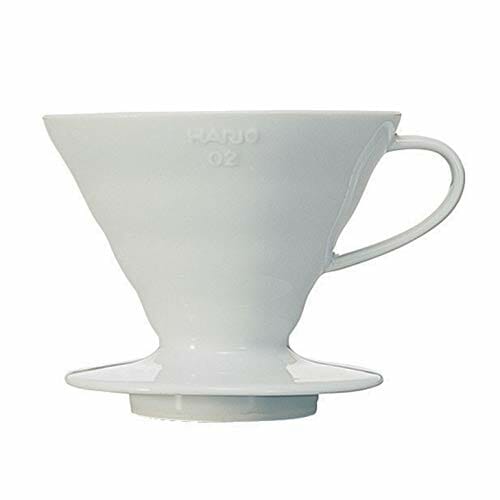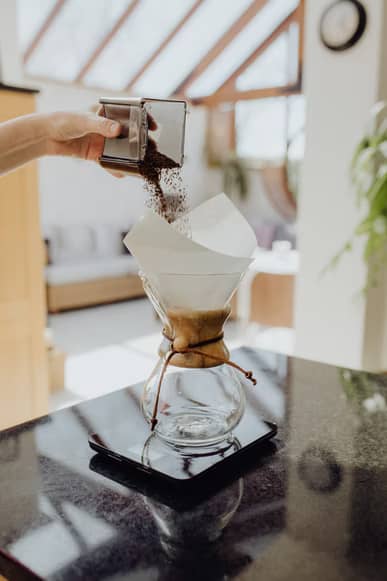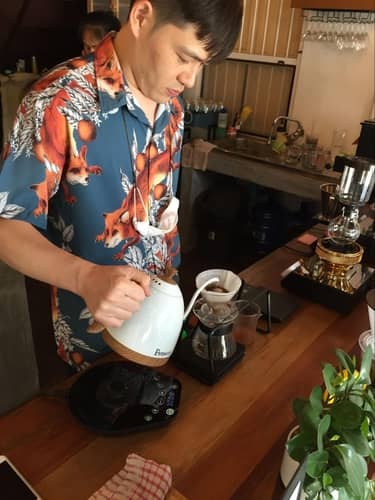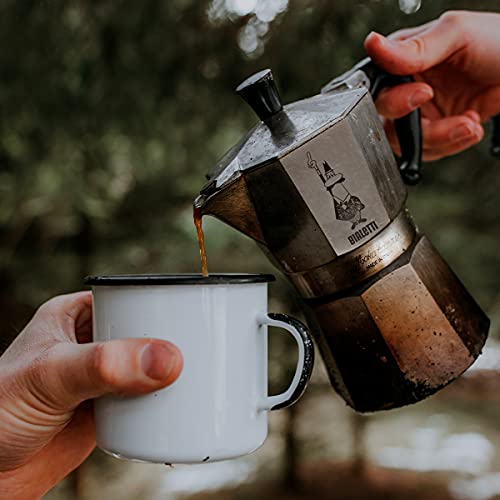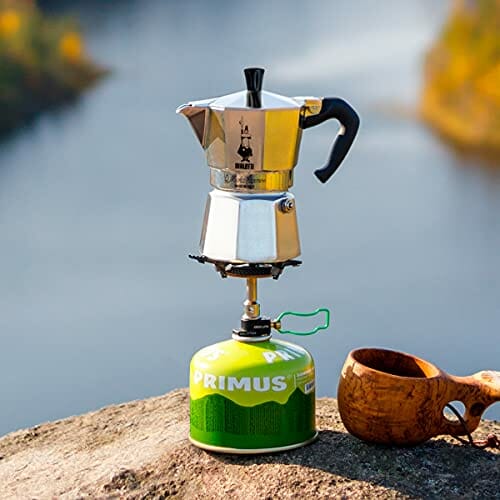Another day, another debate over which coffee brewing method is better.
Thinking of venturing into the manual coffee maker realm but don’t know where to start? Luckily, the Coffee Geek’s got you covered for all coffee-related debates.
In this article, I’ll compare the two brewing methods, Moka Pot vs Pour-Over, which are honestly so different that they can’t even be considered step siblings.
How come? Read on to find all of the differences.
What Is A Moka Pot?
This might not be familiar to you if you live outside of Europe and Latin America, where this device is well-known and still commonly used even to this day.
The Moka Pot is a stovetop coffee maker. It’s essentially a pot that you place on an open fire to brew coffee.
You might have also heard of it being referred to as a stove-top espresso maker, as the concentrated and strong coffee brewed is pretty similar to the result from an espresso machine.
When Was The Moka Pot Invented?
Invented in 1933 by Alfonso Bialetti, the Moka Pot’s beautiful Art Deco design and ability to brew bold coffee revolutionized the coffee-making routine of many households in Italy and beyond.
Why? This style of brewing coffee with pressure was previously known to be achievable only at coffee shops and restaurants.
So this brewing device provides a much-needed solution to produce espresso-like coffee at home.
How Do Moka Pots Work?
Let’s first go through the basic construction of the stovetop espresso makers.
The Moka Pot has 3 main compartments:
- The first chamber – the boiler which comes with a safety valve;
- The second chamber – the filter basket with a filter lid to keep the coffee grounds in place and a rubber gasket to keep everything properly sealed;
- The third chamber – the kettle AKA Moka Pot coffee collector after it’s brewed.
To make espresso-like coffee using the Moka Pot, water in the first chamber will be heated.
The generated steam pressure will push the hot water through the second chamber carrying the coffee grounds.
Extracted Moka coffee will make its way to the third chamber, ready to be served.
Why Is Moka Pot Coffee So Good?
As you can see from the previous section detailing how exactly the brewing process goes, when making coffee using Moka Pots, pressure is involved, which makes it possible to produce such concentrated coffee that the coffee lovers adore.
In case you forgot, the espresso machine also utilizes high pressure to shoot water through the ground coffee bed, creating the deliciously intense coffee taste and heavy body that’s become one of Italian’s finest.
But keep in mind that brewing espresso, especially with commercial-grade machines, requires a very high amount of pressure, usually 9 bars.
On Moka Pots, however, you’re looking at a significantly smaller amount, around 1- 1.5 bars only. 2 if we’re pushing it.
That’s why, although Moka Pots are often interchangeably called stovetop espresso makers, they can’t in fact pull off an espresso shot.
But they still make a damn good coffee cup that can be considered a quality espresso alternative, nonetheless.
How To Use The Moka Pot
Coffee Grounds
Type Of Coffee Beans
Generally, you can make good coffee with the Bialetti Moka Pot using any type of coffee beans.
But, this coffee brewing device originally came from Italy where people celebrate it as part of their rich coffee culture and still use it frequently to this day.
Considering their deep past with the Moka Pot, the Italians definitely know a thing or two more about making Moka Pot coffee than the average coffee drinker.
So, if possible, pick Italian coffee brands to accompany your journey of exploring the Moka Pot brew method.
Roast
To get the final cup to taste closest to espresso, use darker roasts or at least a medium. They tend to be oilier and have a bolder and richer flavor and lower acidity.
But, don’t be afraid to experiment if you love the complexities and brightness in flavors that light roasts offer.
But it can be as challenging as pulling espresso shots using lightly roasted beans. It can work but it takes “work” to get there.
Grind Size
If you didn’t miss my Ultimate Coffee Grind Chart, you’d learn that the Moka Pot calls for a medium-fine grind, which is finer than French Press coffee, the classic black drip, and all of your exes.
The size should be comparable to table salt, but should still be slightly coarser than the ground coffee for espresso brewing methods. Too fine of a grind size can lead to over-extraction more easily and even clogging in the filter.
But, luckily, this coffee brewing device is pretty easy-going when it comes to size, so going a bit coarser would still allow you to properly brew delicious coffee.
And, what matters the most is using freshly ground coffee by grinding right before brewing coffee with a quality burr grinder.
Water
Since Moka Pot brews coffee that’s stronger and more concentrated than the average Joe, the coffee-to-water ratio is around 1:7 rather than the common Golden Ratio of around 1:17.
Brewing Guide
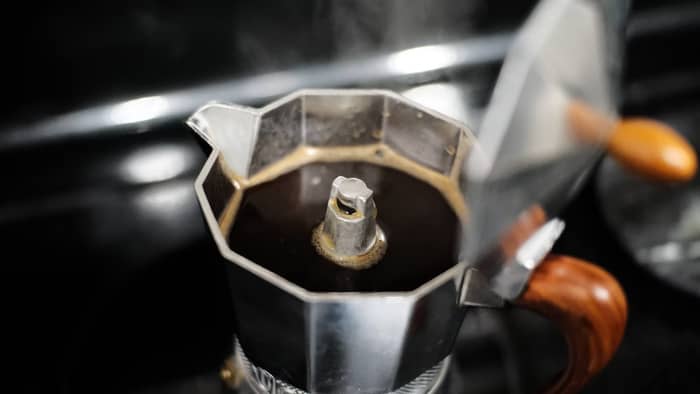
- Step 1: Add water to the first chamber. Put the filter basket into place before adding coffee grinds without tamping. Screw the third chamber on top.
- Step 2: Place the Moka Pot on a stovetop at medium-low or medium heat to start brewing coffee.
- Step 3: When you hear a sputtering or hissing sound, remove the heat as the device is wrapping up pushing coffee into the third chamber and forming coffee foam. Let it sit for around 3 more minutes before serving.
What Is Pour-Over Coffee?
Pour-Over is another popular manual coffee-making method.
It’s an infusion method that involves a constant flow of hot water through the grounds bed on a paper filter to extract coffee.
You can probably envision the process from the name alone.
Pour-Over coffee can be achieved using more than one device. And, of course, each of them would be able to produce a slightly different result.
Some of the most well-known Pour-Overs are the Chemex and Hario V60.
What Is A Chemex?
Chemex is a beautifully designed Pour-Over brewer that’s also popular among the engineering and artistic crowd.
You must have caught sight of this hourglass-shaped beaker at coffee shops. Around the funnel-like narrow neck, Chemex wears a thick wooden collar that’s tied loosely with a leather tie/thong.
Since the whole device is made of borosilicate glass, the collar design also contributes functional benefits (for ease of handling) rather than just pure aesthetics.
What’s So Special About Chemex?
As I’ve mentioned, the whole piece is made of glass, so you don’t have to worry about unwanted flavor transfer from the coffee maker’s material to the extraction.
What’s more, the Chemex doesn’t utilize your regular paper filter.
It requires a special type called bonded filter that’s a lot thicker to do the job better, including filtering out the bitter taste, unfavorable oils, and stray grounds.
This ultimately results in the cleanest cup of coffee you ever get to taste, if done right.
What’s A Hario V60?
Hario V60 is a Japanese dripper cone that’s well-known for its V-shaped and precisely 60-degree angled conical structure.
Other than that, the V60 also comes with distinguished spiral ribs along the cone that are not only uniquely eye-catching but also assist the coffee extraction process.
Hario V60 also utilizes paper filters when brewing coffee following the Pour-Over method, so the whole process is pretty similar to Chemex and other Pour-Over devices.
What’s So Special About Hario V60?
Unlike a trapezoid dripper, the elegant 60-degree conical design lengthens the time it takes water to flow for a more thorough extraction of coffee compounds.
What’s more, the spiral ribs help the device and the paper filter “social distance” from each other, giving more room for the wet grounds to expand and release gas, which is what we often refer to as a “coffee bloom“.
Essentially, the process enables better contact between the grinds and water for a more flavorful cup of coffee. Blooming is also recommended for other Pour-Over coffee brewing devices, including the Chemex.
Visit my Chemex vs Hario V60 article for more details on how they’re different and how to master the brew on each device.
How To Make Pour-Over Coffee?
Coffee Grounds
Type
Generally, any type of beans can be used to brew Pour-Over coffee.
But keep in mind that the Pour-Over method is especially great at highlighting the nuanced and exotic flavors like high-quality single-origin beans that the coffee snobs love.
While coffee blends may work as well, all the unique flavors of different types when mixed likely mellow out and lose their distinct characteristics.
Roast
And the same goes for the roast profile. The Pour-Over method generally works better with lighter roasts with a complex flavor profile and bright acidity, which will not be missed in the final cup of coffee.
If you want to give dark roasts a try nonetheless, pair them with the Hario V60.
Dark roasts may work great with a French Press because of the darker flavor notes left behind and coffee oils.
But after they go through the Chemex and its extra-thick paper filters, all you can taste in the cup of coffee is a burnt and unfavorably dark coffee taste.
Grind Size
Depending on the device, the size of the grounds can vary from a medium-coarse grind to medium-fine to optimize the water flow rate and coffee-to-water contact.
Water
The coffee-to-water ratio for the Pour-Over method is closer to the Golden Ratio I mentioned earlier – 1:17. You can also adjust the ratio to better fit your personal preference. For a strong taste, go for 1:15 instead.
You need to heat water in advance so that it reaches the optimal water temperature to brew coffee, around 195 – 205 degrees Fahrenheit (91 – 96 degrees Celsius).
Another key point you should keep in mind to make great coffee with a Pour-Over device is how you pour hot water.
As easy as it may sound, it takes skills and practice to get the speed, the angle, and the length of time, and the technique of pouring right.
To make your learning curve steeper, use a gooseneck kettle, which is smartly designed to make the job easier.
Brewing Guide
Here are general instructions to pull off Pour-Over coffee.
- Step 1: Fold the paper filter and put it in place. Pour some hot water to soak the filter and preheat the coffee maker before discarding it.
- Step 2: Add ground coffee to the filter. Pour enough water over the ground bed to soak it. Wait around 30 seconds to let it bloom.
- Step 3: Slowly pour the rest of the water over the grounds. You can do pulse pouring by pouring only a small amount of water at a time.
Moka Pot Vs Pour-Over – Could They Be Any More Different?
Beans
Here’s a recap for those who skipped:
Moka Pots work best with dark-roast Italian beans that are ground medium-fine for the closest experience to the espresso, the Italian finest.
Pour-Over devices, on the other hand, pair super well with single-origin light roasts to produce a bright coffee brew where every nuanced flavor note can be picked up.
So, the Moka Pots and Pour-Overs are going straight 180 here, serving a totally different cup of brew from one another.
Brew Process
One of the key differences also lies in the process of producing the brew.
On a Chemex or Hario V60, water is being poured down over the grounds bed to infuse them before filtering the extraction with a paper filter.
The result is a cup of brew that’s clean, bright, light, and smooth.
The Moka Pot, however, involves enough pressure to push the water through the grounds from the bottom chamber to the top.
The extracted coffee only goes through a metal filter, so all of the rich coffee oils and dark sediments still make their way through.
But, when it comes to ease of use, Moka Pot is definitely easier to master than all of the complicated pouring techniques of Pour-Overs.
Brew Time
Both the Moka Pot and Pour-Over take roughly the same amount of time to get the job done, with the latter being potentially faster.
The Moka Pot requires at least 5 minutes to finish the entire brewing process, including the 3-minute sit-around.
The Pour-Over takes at least 4 minutes for the brewing process, but that’s not accounting for hot water preparation, which depends on your kettle.
Portability
The Moka Pot is definitely portable. Its small size and aluminum material should make a good traveling buddy on your camping trips.
You can look for a single-cup size or 3-cup for ease of handling.
It also made it to my list of the best camping coffee makers in the market.
When it comes to Pour-Over brew, depending on the device, you can make it work. The glass Chemex may be harder to bring along even at smaller sizes, but the Hario V60 also offers a plastic version other than the classic ceramic.
Cost
Both the Moka Pot and Pour-Over are around the same affordable price range, less than $50, so know that you won’t break the bank when investing in either method.
Moka Pot Vs Pour-Over: Which One Is For You?
These two are practically night and day different so there’s no point in saying which is better.
If you like strong, dark, and heavy coffee that’s not too hard to pull off, get a Moka Pot.
If you love exploring complex flavors with distinct fruity and floral notes and don’t mind the brewing challenge, many Pour-Over devices are awaiting your purchase.
For more comparison check out this Aeropress vs V60 post.

![Moka Pot vs Pour-Over: Which Brews Better? [Comparison] 2 Moka Pot vs Pour-Over](https://coffeegeek.tv/wp-content/uploads/2021/12/Moka-Pot-vs-Pour-Over.jpg)
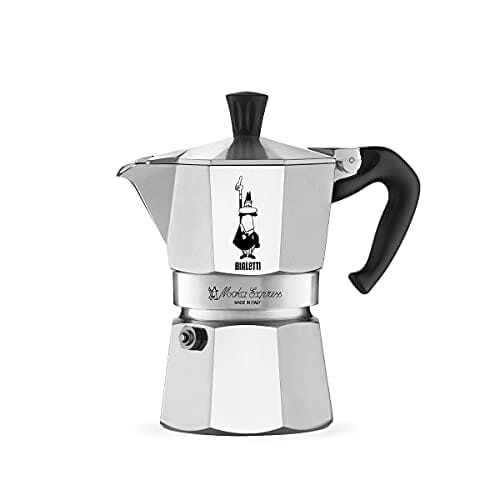

![Moka Pot vs Pour-Over: Which Brews Better? [Comparison] 3 Extracted coffee and foam oozing into the third chamber of the Moka Pot](https://coffeegeek.tv/wp-content/uploads/2021/12/Extracted-coffee-being-pushed-into-the-top-chamber-of-the-Moka-Pot.jpg)
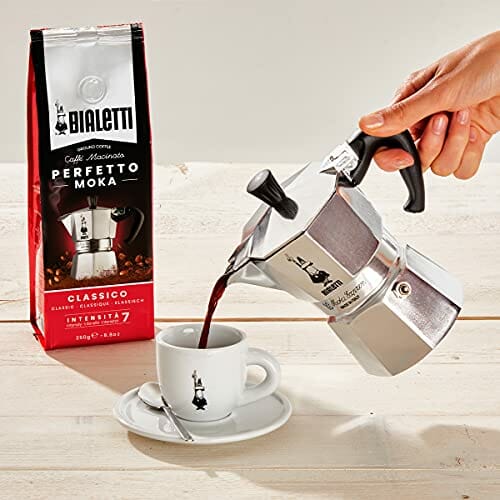
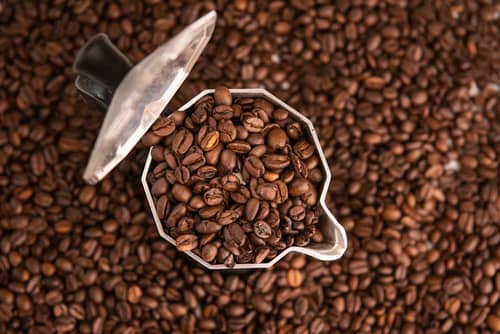
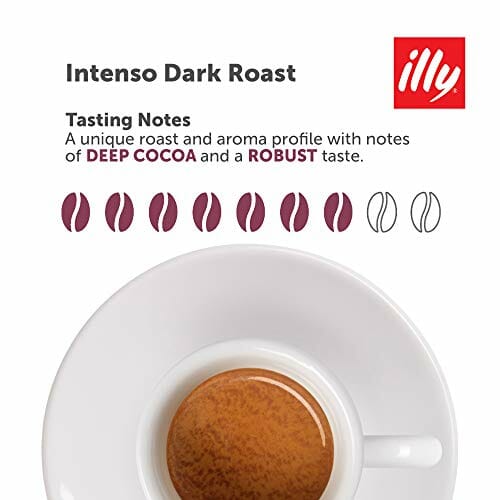
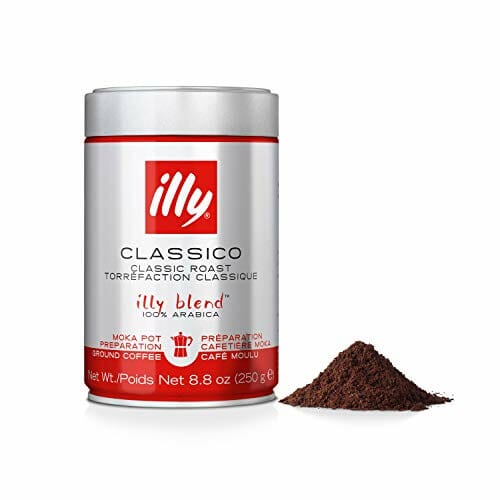
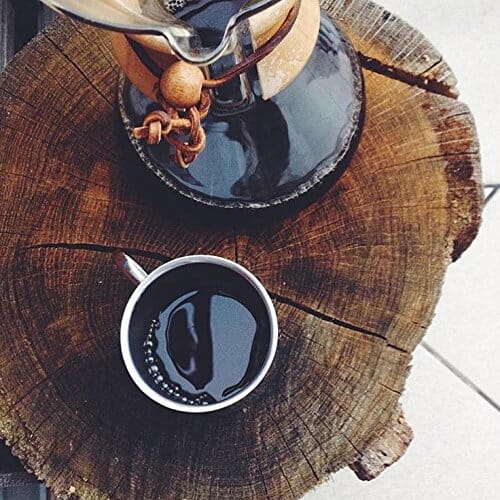
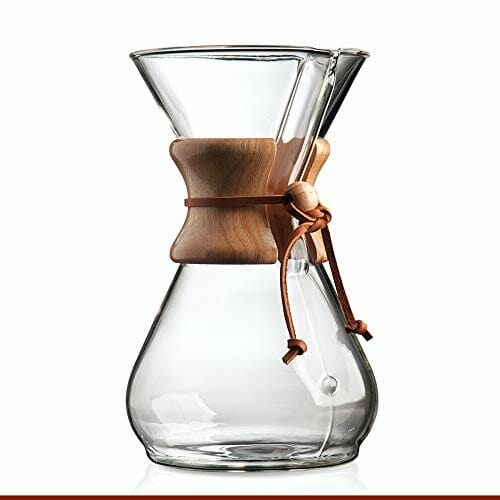
![Moka Pot vs Pour-Over: Which Brews Better? [Comparison] 4 What's So Special About Chemex?](https://coffeegeek.tv/wp-content/uploads/2021/12/Whats-So-Special-About-Chemex.jpg)
